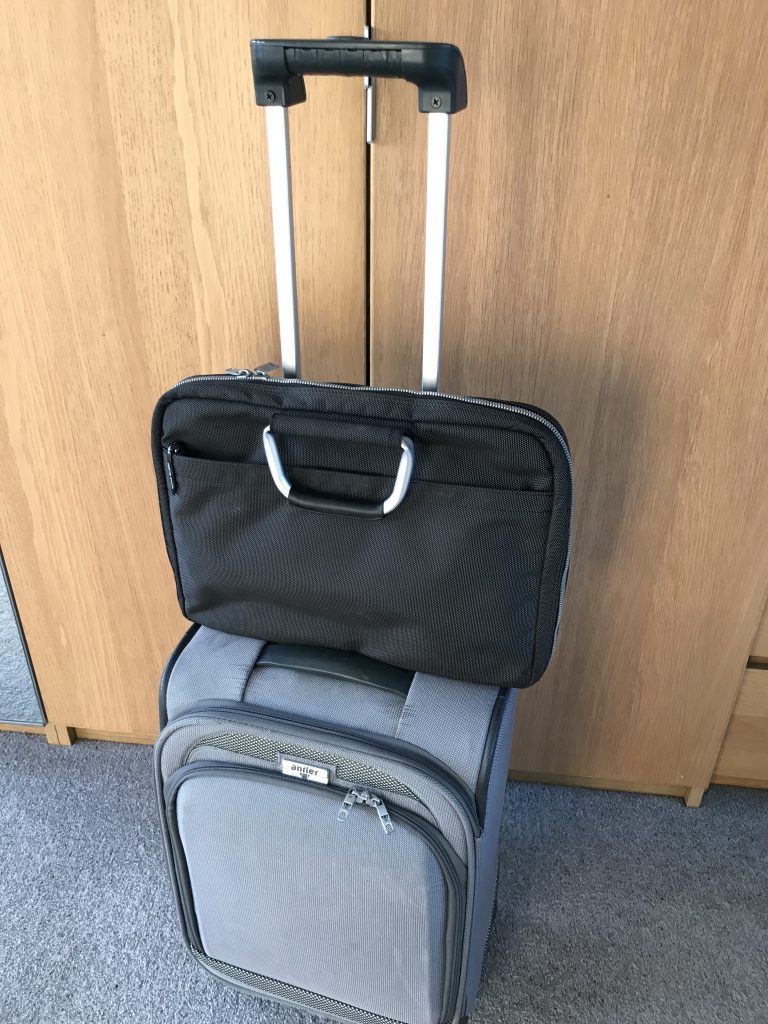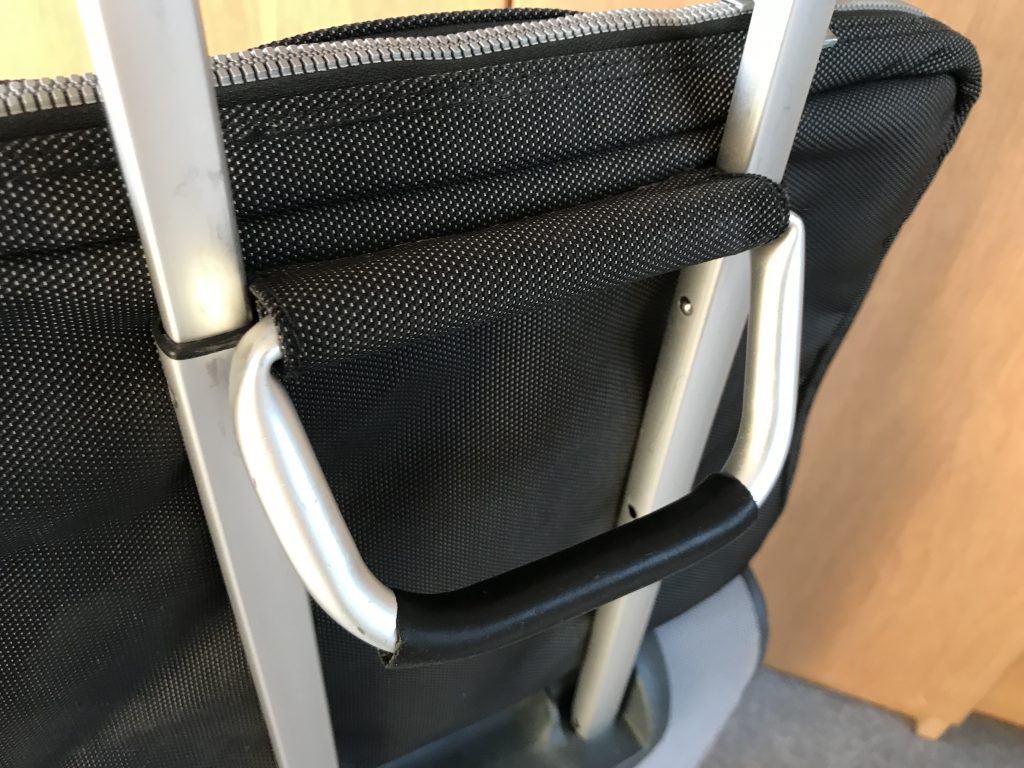Most of my work revolves around business strategy, and so the words of Peter Drucker are never far in the background. Drucker is widely regarded as the father of modern business thinking, and it was he who coined the phrase that if you can’t measure it, you can’t improve it.
As a fundamental principle, I find it especially relevant as I work to get on top of my diabetes. I’ve been using Abbott’s Freestyle Libre for a couple of years now and it has been a revelation. It’s so much more convenient than the eight or more fingerpick tests each day, and it presents the graphical picture of blood glucose as it changes. That is a big step forward. Everything I say here relates to the original Libre sensor. Abbott are now pushing the Libre2 updated device but I have not yet transferred onto that.
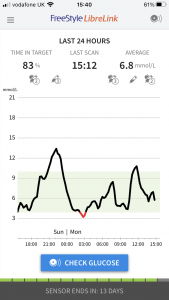 I found that the available info from Libre prompted me into a discipline of scanning regularly and frequently, and that has helped me to appreciate the direction of travel as well as the absolute value of a blood glucose reading. The habit formed with the help of my Apple Watch which I had set up for the timer to buzz on my wrist every thirty minutes. Very discreet and a subtle prompt to use the iPhone app to scan the Libre.
I found that the available info from Libre prompted me into a discipline of scanning regularly and frequently, and that has helped me to appreciate the direction of travel as well as the absolute value of a blood glucose reading. The habit formed with the help of my Apple Watch which I had set up for the timer to buzz on my wrist every thirty minutes. Very discreet and a subtle prompt to use the iPhone app to scan the Libre.
The screenshot shows that like investments, BG readings can fall as well as rise, and sometimes quite quickly which has big downsides. If I am working quietly at home, I will shorten the scan frequency to 20 minutes and I get a good insight from that. There are times, though, when that doesn’t work – like in business meetings where it is just inconvenient or disruptive, or on long car journeys where it is actually illegal.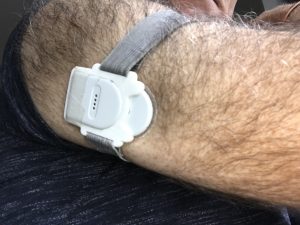
Enter the next discovery – the MiaoMiao transmitter. This small device is about the same depth as the Libre sensor and with a suitable aftermarket strap can clip over the sensor. Not too bulky and once set up (that’s a whole new chapter yet to write) works pretty well. It works with a separate app on the iPhone, I use xDrip4iO5 but there are others that do a similar job on iOS or Android.
Best of all it can use a workaround to export the BG reading as a short calendar event, which is where the Apple Watch comes back into play. 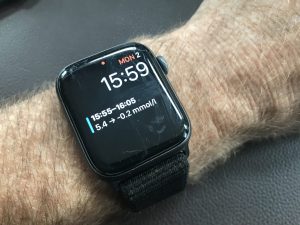 It creates a calendar event every five minutes and the event text can be set to shows the trend and numerical change from the last reading. In the image, it shows that four minutes ago BG was 5.4 mmol/l and had fallen 0.2 in the five minutes prior to that. That insight is priceless because if rapid change is happening particularly if BG is falling, then a quick response can prevent a hypo.
It creates a calendar event every five minutes and the event text can be set to shows the trend and numerical change from the last reading. In the image, it shows that four minutes ago BG was 5.4 mmol/l and had fallen 0.2 in the five minutes prior to that. That insight is priceless because if rapid change is happening particularly if BG is falling, then a quick response can prevent a hypo.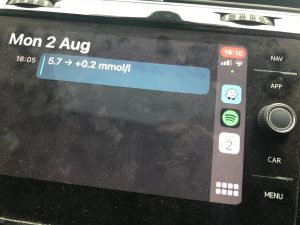
In the car, with the right technology, it gets even better. I drive a 2019 VW Golf (a brilliant piece of kit anyway) and with CarPlay I can see calendar items on the screen. As with the watch, every five minutes I can see my BG and if it is starting to move then I can do something about it. In this case I can see that a few minutes after the watch reading I am still fluctuating around the 5.5 level, and so in pretty good shape.
That has been the biggest single change in removing the guesswork on long journeys – before this I would often play safety first and eat snacks during the trip that would send me into high BG territory which takes a long time to correct with additional insulin once the journey is over.
It helps at work too – a quick glance at the watch and I know if I should grab a biscuit to go with the next coffee to keep me in range, or more likely to avoid the biscuit and avoid going into the high sugars territory. Similarly on a bike ride or canoe trip when putting in the physical effort and scanning every 20 or 30 minutes isn’t really practical, this is a real asset.
The engineer in me can’t resist interpreting the data and so I have learned so much more about how my body reacts to different situations, different foods, and how to have finer control over the condition.
This setup is a lash-up of different bits of gear and software, but it has really helped me get on top of things. I’m sure the manufacturers will develop and stitch things together in future product releases, but I’m really pleased in my own small way to experiment with this stuff and help to move the thinking forward.

